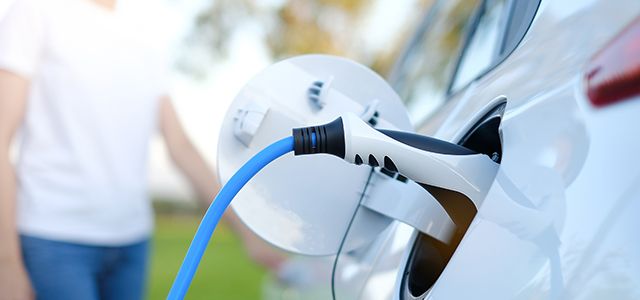Looking way far ahead, by the time you’re ready to replace your first round of electric vehicles, your decisions will be based on real-world fleet data through which you will have analyzed the cost and productivity of your in-service electric vehicles.
But you’re not there yet. Instead, your initial transition from gasoline- or diesel-powered vehicles to all electric or hybrid-electric won’t be easy.
For one, you don’t yet know how the cost and performance of EVs compare to your current vehicles. Second, you don’t currently have EV charging solutions in place. And third, you don’t know how the cost of your fleet’s energy needs will compare to the cost of fuel.
This doesn’t sound like a situation where you can go all-in and expect the best results. Instead, what if you started with a small, easily managed portion of your fleet to electrify? You could start with what looks like the best vehicle and/or job function option, set it up with a charging solution, and take it for a spin. Along the way, you’ll collect enough data to confirm your choices, or make small adjustments as needed, and then go a little bigger. Repeat and then go a little bigger again.
In a few years’ time, you’ll have transitioned your entire fleet in what will feel like a great endeavor because you will have made incremental improvements here and there. If you like the sound of that, then keep reading…
Choose the right EVs
The right electric vehicles for your fleet will meet or exceed the performance of your current vehicles in terms of employee productivity and revenue generation. To achieve that, you need to analyze your vehicle operating data and then do a comparison for EV mileage, payload, performance in typical road and weather conditions, safety, and driver comfort.
If those needs can be addressed with light- and medium-duty vehicles, you’ll soon have a variety of models to choose from. If you need larger vehicles than that, there are a few currently available but certainly still in the conversation for transition. You could use this as an opportunity to evaluate the requirement for heavy-duty vehicles and look to downsize where applicable.
Also, keep an eye on OEM news and announcements about up-and-coming EV models, their estimated ranges, their carrying capacity, and their configurations.
Now pick a segment or region of your fleet that shows a strong compatibility between EV models and your needs, and start there.
Decide how you’ll charge them
Your choice of charging solutions depends on where your vehicles spend their off-duty time. Here are your options:
- At-home charging
At-home charging is a great option if you have drivers who take their fleet sedans, SUVs, or pickups home with them at the end of the day as long as the driver’s home can accommodate the installation of a charging station. However, if they live in an apartment or rent, another solution will be needed.
For those drivers who can charge at home, you’ll need more than just an electrical outlet. You’ll recoup your investment in “smart chargers” that capture and integrate energy costs with the rest of your fleet data for calculating TCO. It will also make it easy for you to reimburse charging costs to your drivers.
- Centralized charging depot
If your fleet vehicles are parked at a single location for a period of time—the case for most commercial truck/van fleets—this is an ideal situation for a centralized charging depot. Depending on your capital expenditure limits, you can purchase and install your own depot charging solution, or you can partner with a charging service provider.
A charging service provider can:
- Predict energy costs and mitigate volatile electricity prices.
- Provide a solution price per vehicle per month.
- Align services to your vehicle replacement strategy.
Depending on the vehicles and their usage, not every vehicle would have to be charged every day. Charge management software will help you rotate charging spots to ensure vehicles are ready to go when needed.
- Public charging
Although the number of public charging stations is steadily increasing, this option is only ideal for getting vehicles that are low on charge just enough energy to get to their routine charging location. As a result of unregulated charging fees, public charging costs more and will increase downtime if drivers need to wait for a charging unit to become available. Also, they are typically designed for passenger vehicles only, not commercial trucks/vans.
The secret—a phased approach
Introducing electric vehicles in phases will produce results that are vehicle- and region-specific. Learn gradually at a reasonable pace how your fleet performance responds to the new technology. As you see positive results, you can repeat that strategy with similar portions of the fleet, adjusting accordingly to the nuances of this particular segment of your fleet. Or if the outcome is less than desirable, you will have confined that to a small portion of the fleet and can move forward making adjustments based on real-world data.
It will likely take most organizations several life cycles to complete this transition. In time, you will have developed a manageable replacement strategy for the entire fleet.
If you’re looking for more EV fleet guidance, Holman can help. Contact us with your questions or sign up to receive the Morning Brake newsletter for OEM news and announcements, fleet and auto insight, and more.
Sponsored by 
by Emily Graham, Holman Director of Sustainability
Source: https://www.automotive-fleet.com





